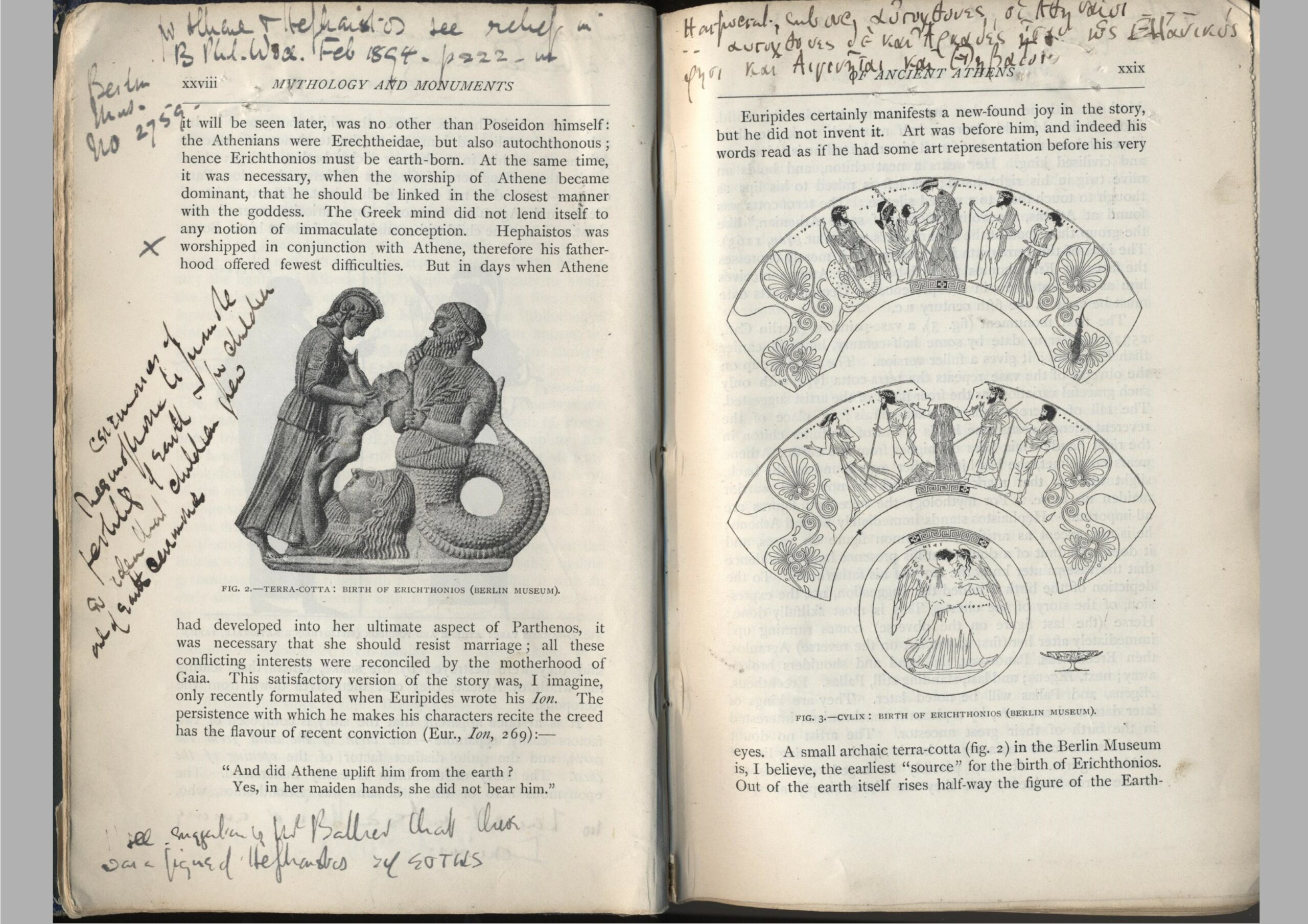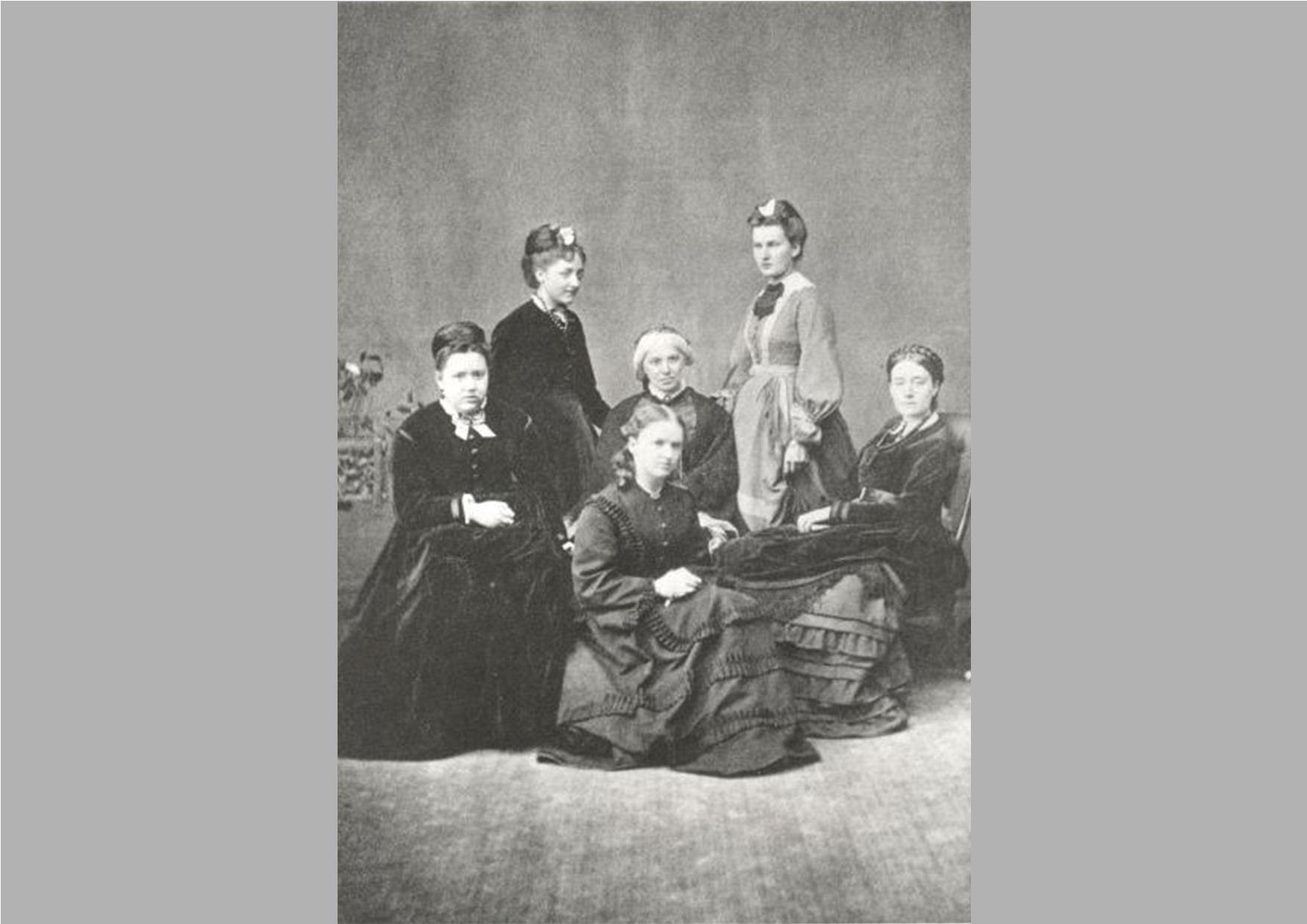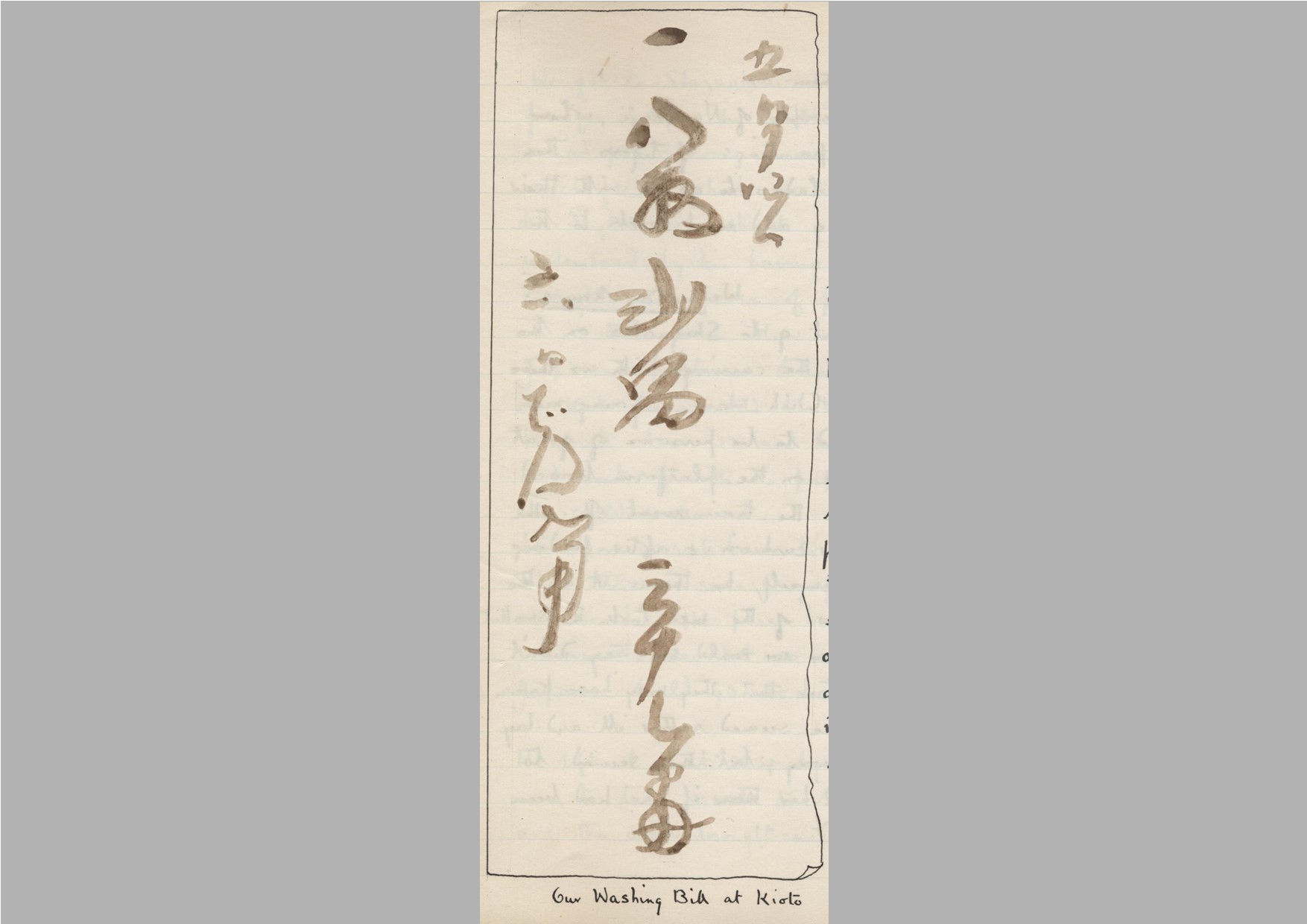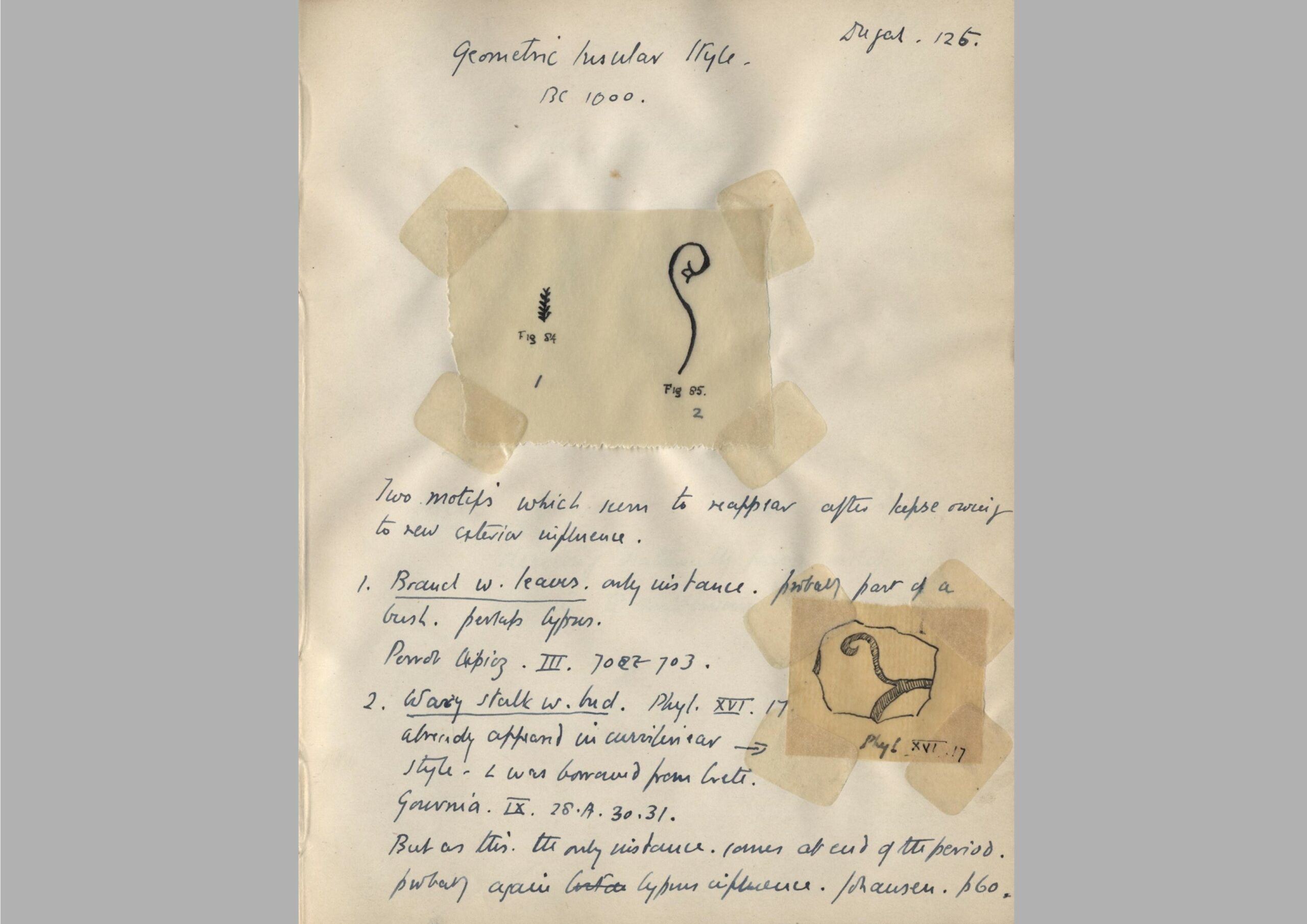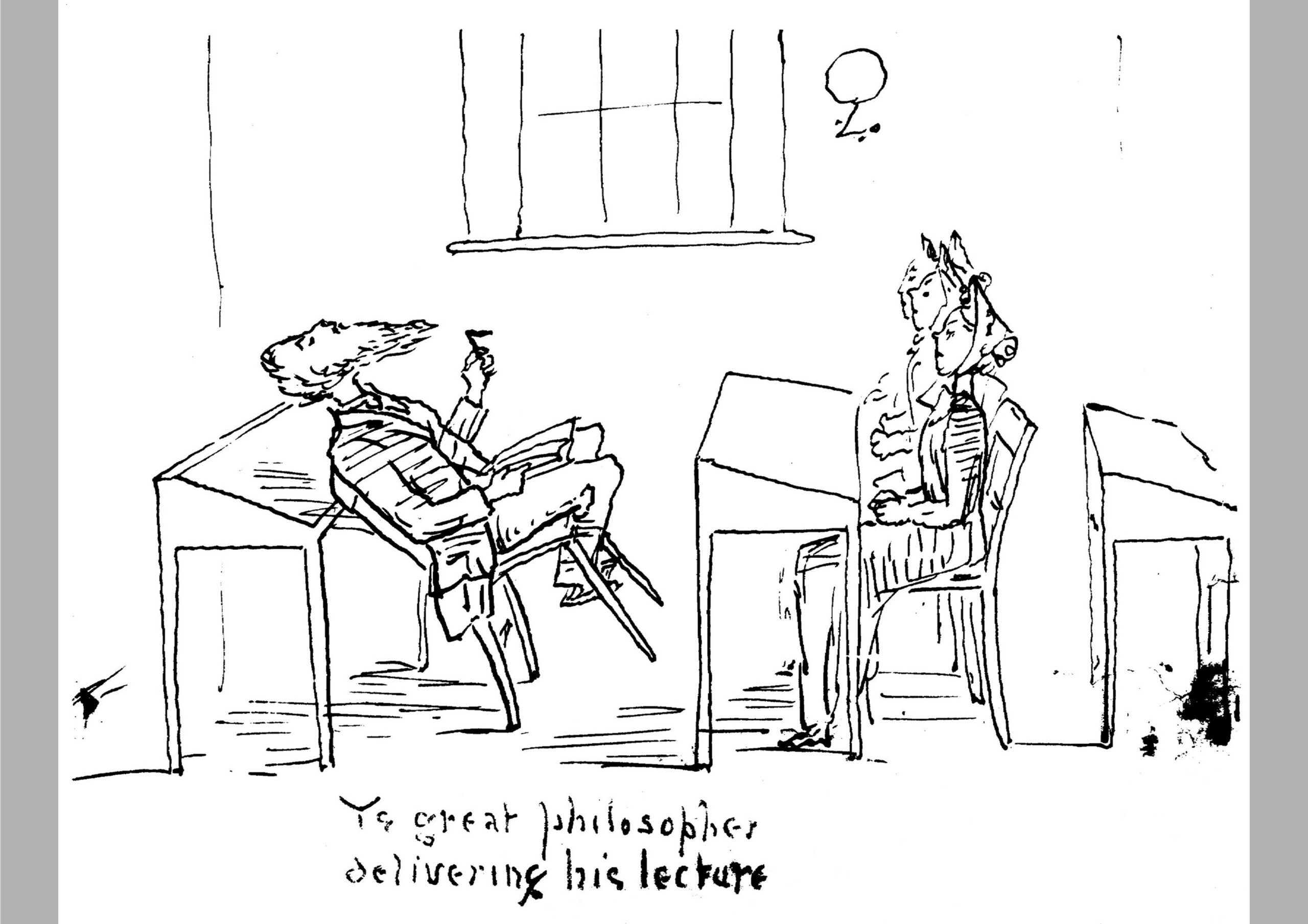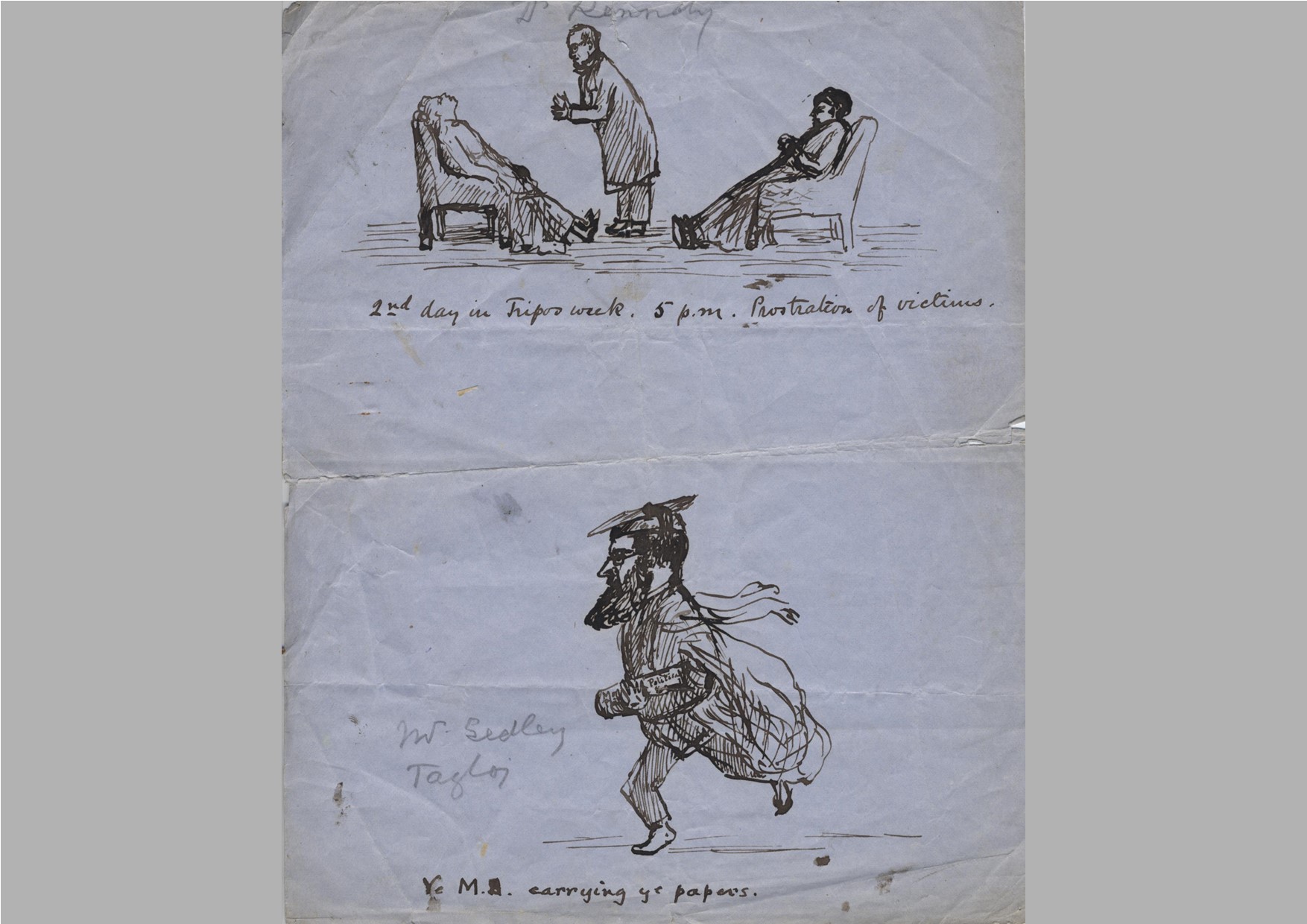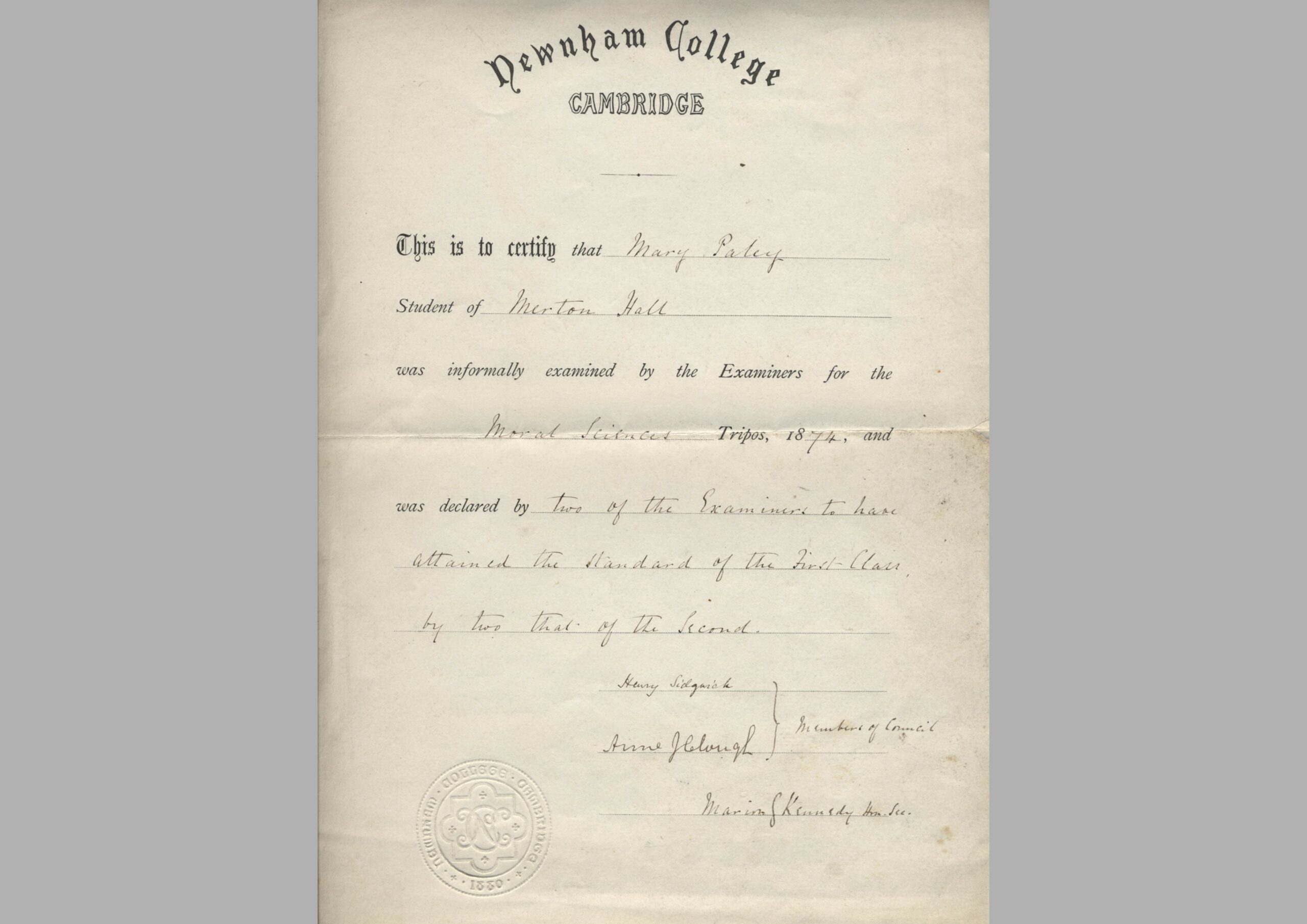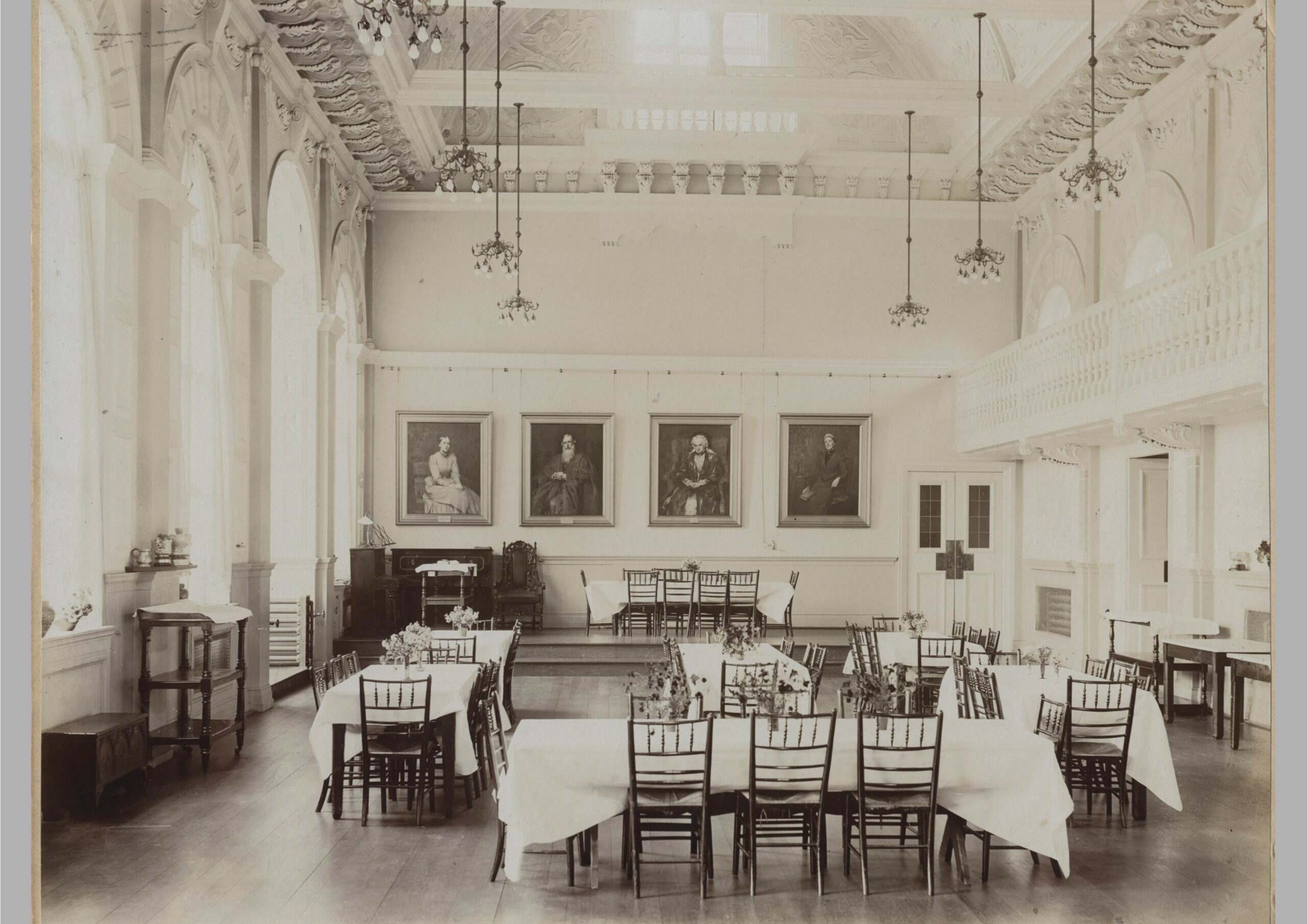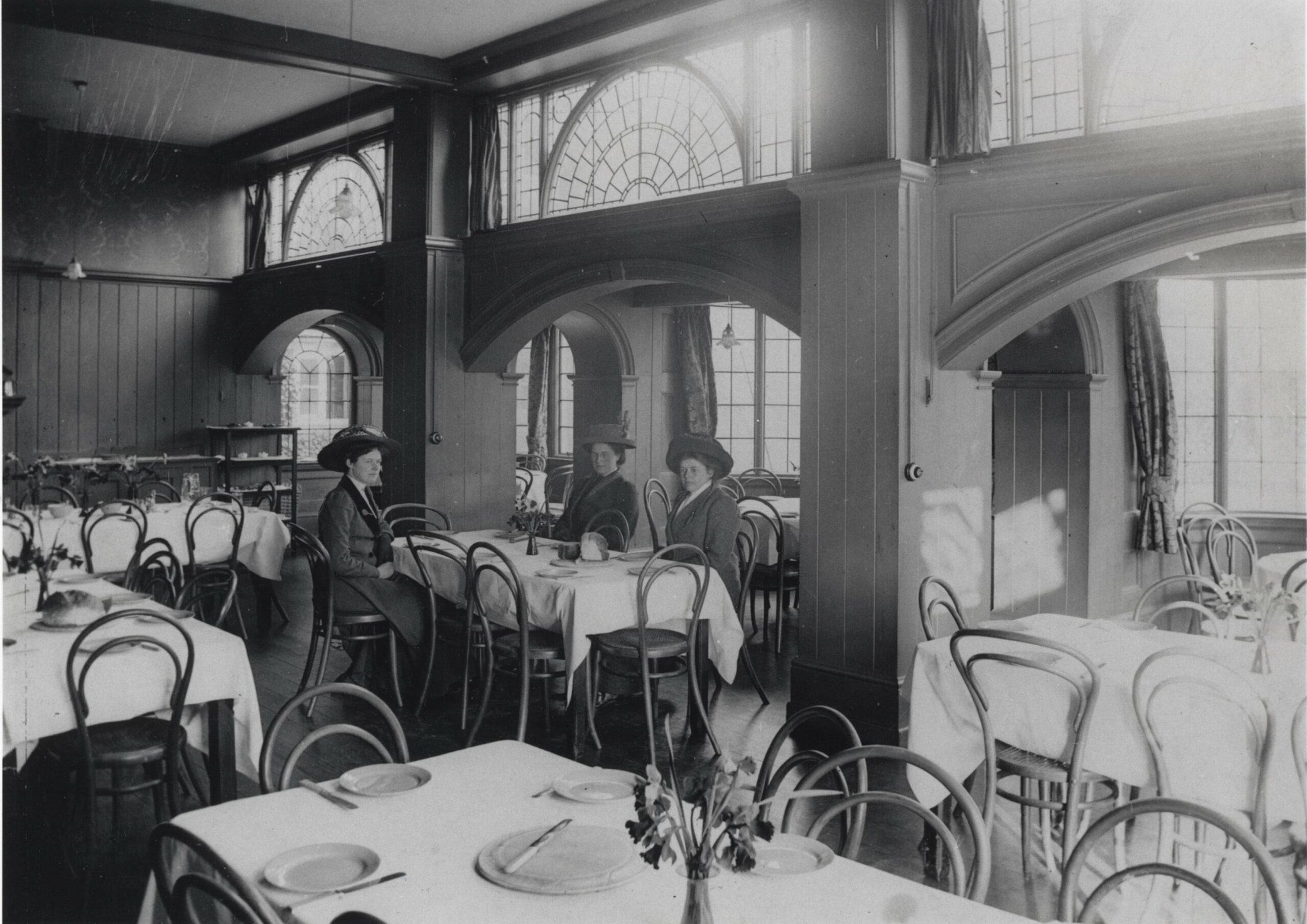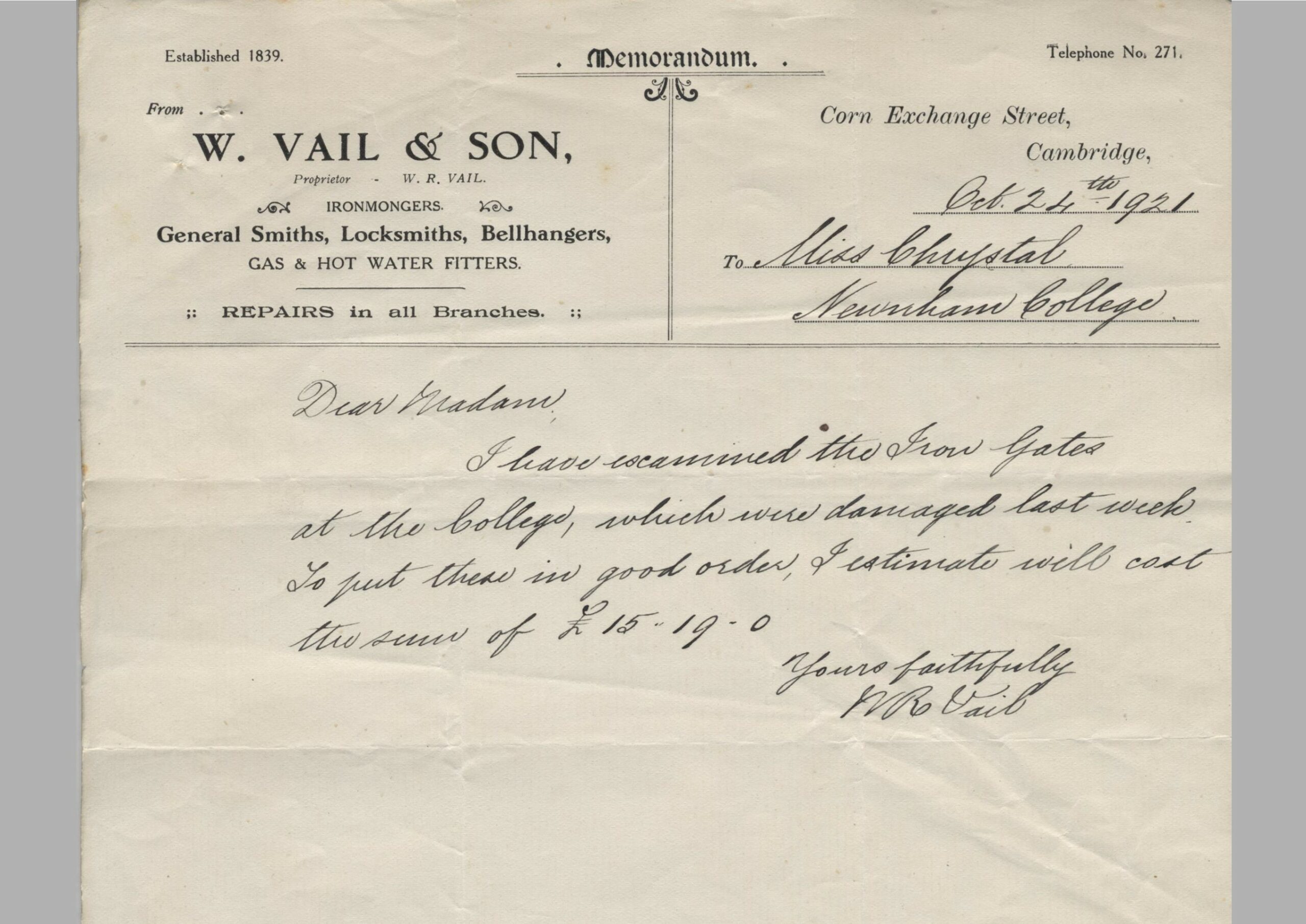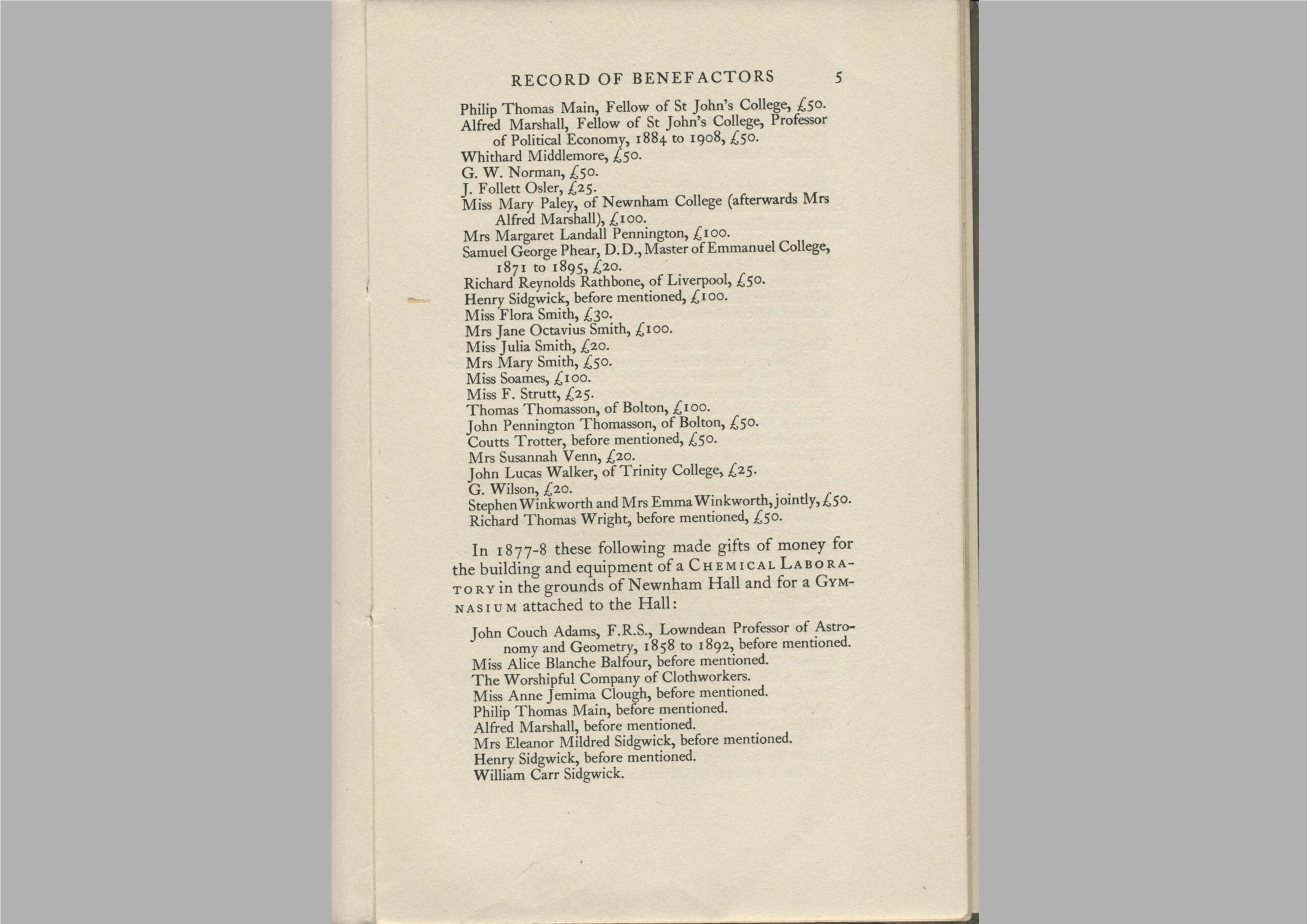Pages from Jane Harrison’s annotated copy of Mythology and Monuments of Ancient Athens (London, 1890)
This book comprises a translation of part of Pausanias’ Attica by Margaret de Verrall (NC 1875) with an introductory essay and archaeological commentary by Jane Harrison (NC 1874, College Lecturer 1899-1922). This double page spread from Jane Harrison’s own much annotated working copy includes references to articles, notes on theories, and lines of Greek. Fittingly, the volume is dedicated to ‘those who have taught me’.
[NCA PP/Harrison/2/2]
Commemoration Menu, 24 April 1915
Commemoration is a celebration of 24 February 1881, the day on which the University Senate voted to allow women to take the Tripos Examinations by a majority of 398 to 32. This was taken as confirmation that Newnham was ‘no longer an accident, an alien, and unauthorized protégé, but an Institution recognized by the University of Cambridge’, as Anne Richardson’s (NC 1881) observed in her reading at Commemoration in 1885.
The menu is signed by a number of the students, alumnae and staff who were present.
[NCA AD/6/3]
A photograph of Principal Anne Jemima Clough and the first five Newnham students of 1871
This photograph features the first Principal of Newham, Anne Jemima Clough, with students Mary Kennedy, Mary Paley, Edith Creak, Ella Bulley and Annie Migault. It was taken in the autumn of 1871 at 74 Regent Street, the first home of what would become Newnham College.
[NCA PH/10/1, photographer unknown]
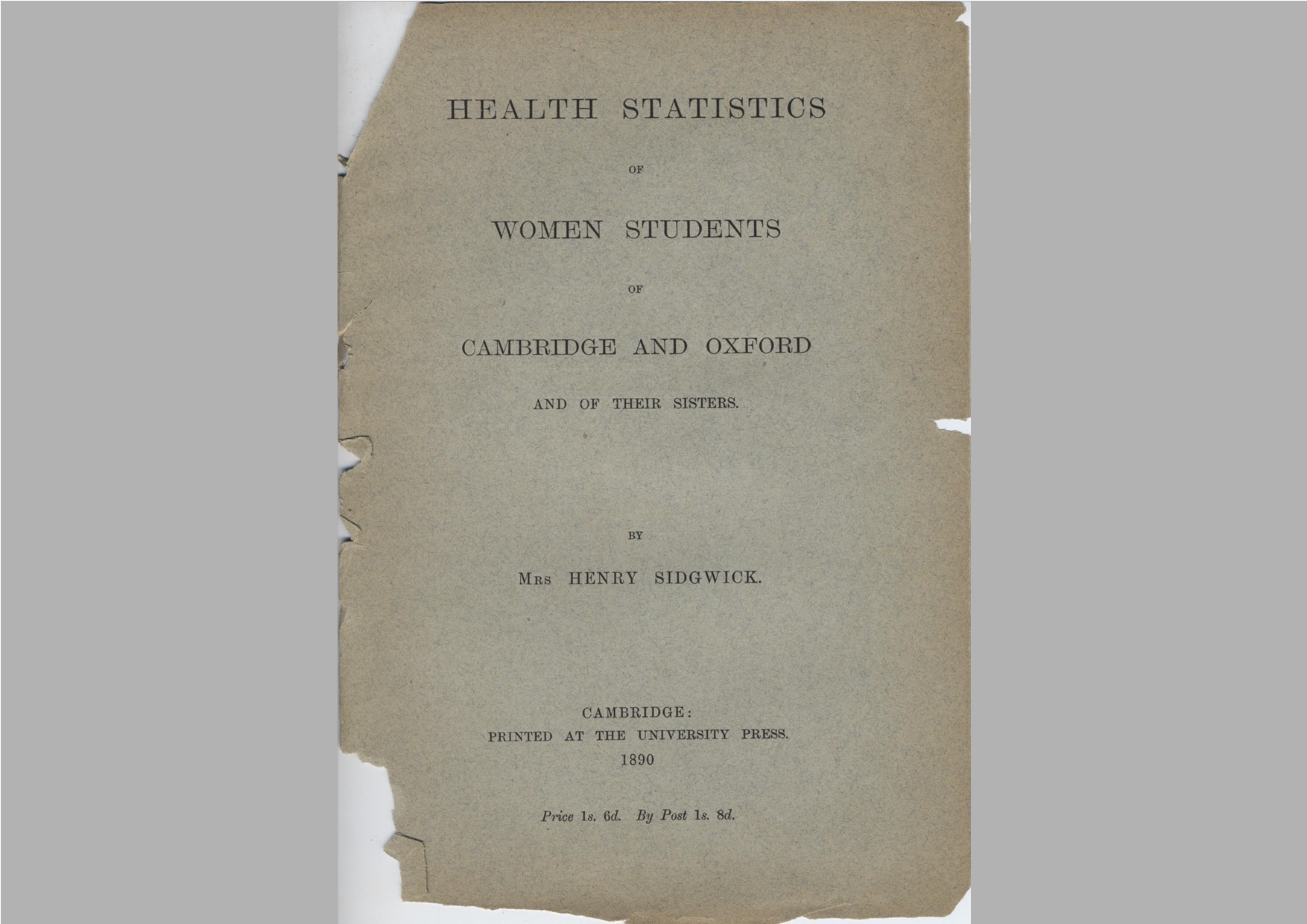
Second Principal Eleanor Sidgwick’s Health Statistics of Women Students, 1890
As Eleanor Sidgwick explains in the introduction to this publication, ‘Much interest has at various times been expressed in the question of the effect of a university course of study on the health of women, and many statements both favourable and unfavourable have been made about it. But authentic and detailed information as to observed facts can scarcely be said to have existed hitherto in England on this subject.’
In response to innuendo in the popular press, she set out to conduct a detailed study in collaboration with the other women’s colleges in Oxford and Cambridge, comparing the health of women who had attended university with their sisters and cousins of similar age who had not. She concluded that ‘We may I think say with confidence that there is nothing in a university education at all specially injurious to the constitution of women, or involving any greater strain than they can ordinarily bear without injury’.
Health Statistics of Women Students (Wellcome Collection)
Philippa Fawcett’s travel journal
Phillipa Fawcett (NC 1887) kept a journal during a round the world trip with Blanche Athena Clough (NC 1884, Principal 1920-23) between November 1899 and July 1900, when she was a college lecturer and B A Clough was Vice-Principal of Old Hall. In this extract she describes visiting an industrial exhibition in Kyoto, Japan ‘of every kind of thing that is made’, including beer, embroideries and paintings, and textiles. She also reproduces her laundry bill.
[NCA PP/Fawcett]
Alice Lindsell’s scrapbooks of plant motifs in Greek pottery
Alice Elizabeth Lindsell (1878-1948) read Classics at Newnham from 1900 to 1904, and went on to work as secretary to Principal Katharine Stephen and Garden Steward, organising Newnham students for land work during the First World War. She went on to serve as Warden of Bedford College House, and continued her research into Ancient Greek botany. Her papers include scrapbooks containing sketches and notes on plant motifs from Greek pottery and also sketchbooks of botanical studies.
[NCA PP/Lindsell/1/3]
Mary Kennedy’s sketch of Henry Sidgwick giving a lecture
Mary Kennedy was one of the first five students at Newnham, and had attended the first programme of Lectures for Women in Cambridge in 1870-71, organised by Henry Sidgwick. Here she caricatures his lecturing style.
[NCA EC/2/3/14]
Amy Bulley’s sketches of Tripos week scenes
As women were not permitted to sit Tripos exams formally until 1881, the earliest students at Newnham took them informally. Mary Paley Marshall recalls that:
‘As we were the first of Miss Clough’s students who attempted a Tripos, we were made much of. The Miss Kennedys [Marion and Julia] gave us very delicate light lunches, and after it was over they took us to stay with them at Ely until the results were known for fear the excitement might be too great for us.’
[NCA EC/2/3/14]
Mary Paley’s Newnham College certificate, 1874
Mary Paley Marshall, one of the first five students at Newnham, sat the tripos exams unofficially, and was issued a certificate by the College rather than the University.
Merton Hall is part of St John’s College, and was the home of Newnham College from 1872 to 1874.
[NCA AC/6/3]
Photograph of Clough Hall dining room
This photograph shows the dining room of Clough Hall (now the College Hall) c. 1908, including the founders’ portraits and William Morris chairs.
[NCA PH/3/3/16, photographer unknown]
Photograph of Old Hall dining room
This photograph shows the dining room of Old Hall (now the Barbara White Room) c.1890.
[NCA PH/3/1, photographer: J & G Taylor, Green Lanes, London]
Estimate for repairing damage to the Clough Gates
On the evening of 20 October 1921, shortly after 8.30pm, a hostile crowd of between 100 and 1500 undergraduate men made their way to Newnham College, following a vote on degrees for women in the Senate House. They attempted to force entry through the Clough gates in the Pfeiffer arch by ramming them with a handcart and caused significant damage.
No Ordinary ‘Rag’: the attack on the Clough Gates
Excerpt from the 1921 published Record of Benefactors
’IN this the Jubilee Year of the College, 1921, this RECORD OF BENEFACTORS is made, so that we may call to mind their many and great labours on our behalf, and that their memory may be preserved and their names held in honour by all future generations.’
This section records the many supporters who contributed towards the College buildings.
Every Tripper, a morality play
This parody of Everyman presented by ‘the Minor Poets’ in 1906 uses the form of a medieval morality play to chart the temptation, fall and redemption of Every Tripper (a student preparing for their Tripos exams). Other characters include The Microbe of Tripos Fever, Games, Cocoa, Midnight Oil, Crambooks, Virtuous Principles, and a Chorus of Examiners. As the epilogue observes:
‘And remember Midnight Oil, Games, Crambooks and Cocoa
They all at the last Every Tripper forego,
Save her Virtuous Principles do her lead,
And if of them she take no heed,
Then shall she have no help indeed.’
[NCA HI/2/2/1]
The sculpture also includes:
A letter by archaeologist Prof Dorothy Garrod, first woman Professor at Cambridge, 1 February 1952
Dorothy Garrod writes to Myra Curtis, Principal of Newnham, outlining her plan to resign the Disney Chair of Archaeology in order to retire to France and continue her own research in both France and Lebanon. She reflects on the privilege of being the first woman professor at Cambridge and is pleased to note that there is now a good field of potential successors.
[Newnham College Archives AC/3/1]
A letter home by Mary Hutton, one of the College’s early students, 9 [October?] 1875, 10pm
Mary writes late at night to one of her siblings, describing the gym outfit she has yet to acquire, boating trips on the river, and her corridor mates.
[NCA PP/Hutton/2]
A letter from Anne Jemima Clough, the College’s first Principal, to Horace Darwin, 16 December [1897?]
Anne Jemima Clough writes to Horace Darwin regarding a visit from Alice Bonham Carter, Mary Ewart, and ‘a few friends specially connected with the College’, and the acquisition of some scientific equipment. Horace Darwin ran the Cambridge Scientific Instrument Company.
[NCA EC/3/4]
A letter home from Newnham student Rosalind Franklin, co-discoverer of the structure of DNA, 10 October [1941]
Rosalind Franklin (NC 1938) writes to her parents, describing how life in college has change due to economies necessitated by the war, and the trials of having to go to the air raid shelters for every alarm. She requests some thick socks and another rug or blanket to guard against the cold, damp air. She notes that although there are fewer men at Cambridge, there even more women than usual at Newnham.
[NCA PP/Franklin/1]



